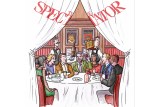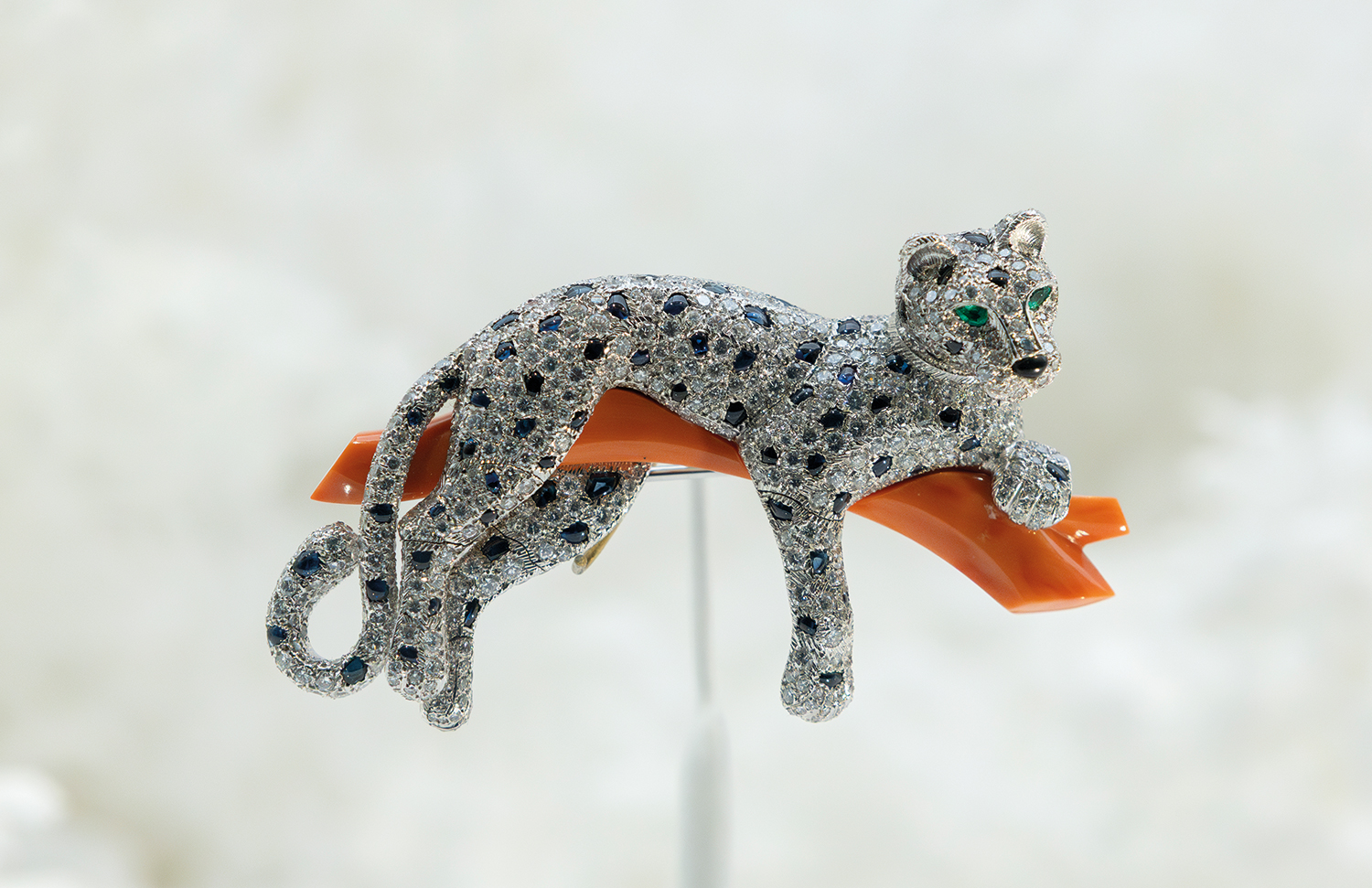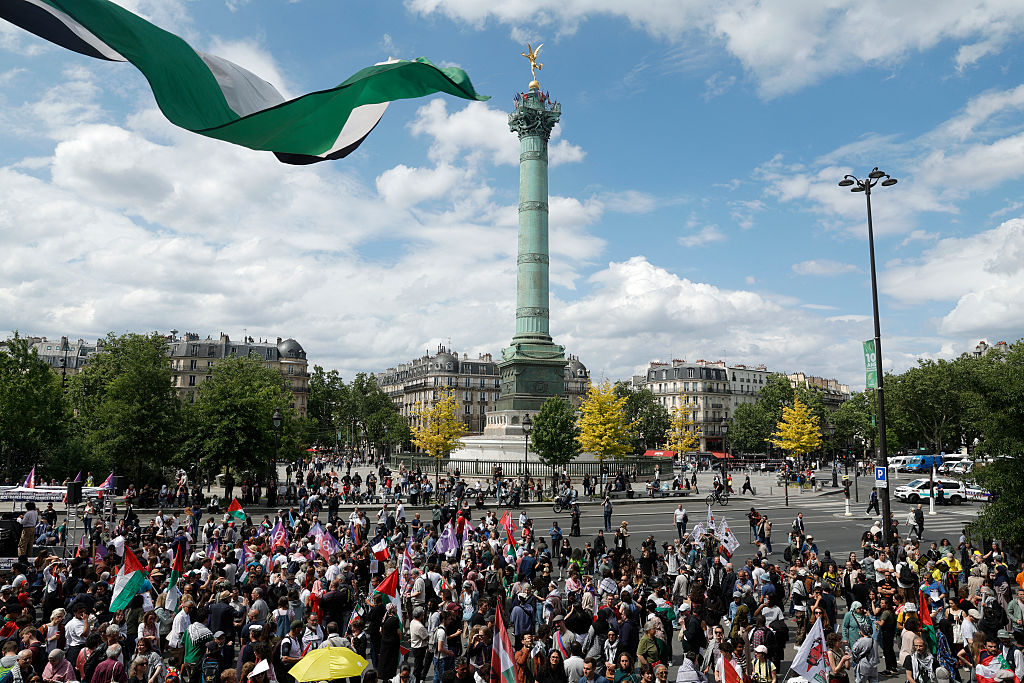
In the fall of, I suppose, 1962, my friend Jimmy Davison and I, window shopping on Fifth Avenue, bumped into the glamorous Venezuelan playboy-grandee Reinaldo Herrera. Jimmy asked where he was going. ‘I’m just nipping into Cartier. They’re fixing my skis,’ Reinaldo replied. Autres temps, autre moeurs. I doubt anyone today uses the world’s most famous jewellers as their local Timpson’s, though I suspect Cartier’s unrivalled in-house craftsmen could still run up a supple sapphire USB cable if requested.
I doubt anyone today uses the world’s most famous jewellers as their local Timpson’s
Because that was partly the firm’s point. Apart from the staggering banque-busting biggies, they, almost uniquely, made the most exquisite smaller things. Bejewelled necessaires de dames, exactly sculpted to a gloved palm, fitted with a matching, mirrored poudreuse, a slim baton for Chanel red lipstick, a crystal phial for Guerlain’s L’Heure Bleue, and perhaps, if Jean Cocteau is to be believed, a ribbed platinum straw for the discreet hit.
Like Elsie Mendl in decoration, Cartier brought modernity to bijouterie. Fabergé had made objets d’art: but in the Rue de la Paix, New Bond Street, Fifth and 52nd, Cartier’s muted rooms displayed practical pieces in their showcases. Miniature notecases with a pencil to match, a slim gold cigarette lighter or enamelled holder, simple evening links, and more. Such were the baubles that fortunate guests of the society-barging American hostess Laura Corrigan found folded in their napkins at her lavish dinners, not to mention a flexible-gold-strapped watch for any HRH she’d nabbed.
With the arrival of aviation, and two-seater planes the new toy for high-flying heroes, Cartier supplied society’s pilots with the Panthère and later, the Tank, watches. Lean and leather-strapped, both became, and remain, the ne plus ultra for men’s wrists, as did those interlocking triple ‘Russian’ rings, still the only gleam of gold that should be seen on the male hand.
Chic trinkets like these advertised that it wasn’t only the fuck-off rocks, the matched parures, the tremblant tiaras that made the name Cartier peerless around the world.
Feminine temps have autred, and women no longer want such enchanting knick-knacks, no longer powder their faces in public, nor apply lipstick at table (so sexy) and now light their Vogues with a Bic.
I remember once driving Lady Bruntisfield to Cartier. I pulled up smartly at the New Bond Street store. Tania was aghast. ‘Surely you know,’ she said in her delicious Mittel-European voice, ‘Vun never uses zee front door. Take me round to Albemarle Street at vunce.’ This discreet entrance meant business, clients with taste and knowledge, people with accounts, designers bringing the newest ideas, a hushed haven away from the glitter and gloss up front. From here, dear Arnaud Bamberger, who ran ‘London’ for many years, would arrange starry lunches in the first-floor Louis-the-Something panelled dining-room, gave gala dinners in floral fantasias, provided sumptuous teas for Queen Elizabeth in the room behind his box at Cartier-sponsored polo. Whatever its merch, Cartier remained grandly unflashy.
Now the V&A has thrown open its doors, its many rooms, to show us all how the magic began, grew, and lives. From the early, intricate, towering tiaras for Edwardian duchesses, to the newest, sleekest, must-have bangles and ‘Juste un Clou’ – Aldo Capullo’s witty twisted-nail earrings – the whole gamut of Cartier’s knack with these rarest minerals is on dazzling display. The alacrity with which they incorporated historical moments is fascinating. End of China’s imperial dynasty? Boom! Cartier are mounting ‘spinach’ jade plaques with diamonds. King Tut’s tomb found? Kerpow! Cartier carve vast stones into scarabs set with azure enamel. India was ever an inspiration: Alice Astor had uncut rubies as buttons on her tracht jackets. Hollywood’s technicolour influenced their tutti-frutti multi-hued pieces, what Daisy Fellowes called ‘beach jewellery’.
If Jean Cocteau is to be believed, Cartier made a ribbed platinum straw for the discreet hit
All the showstoppers are here: Queen Elizabeth’s sublime, soothing, pink diamond ‘Coronation’ necklace; the articulated pavé panthers; the Duchess of Windsor’s strutting flamingo brooch – hideous, I feel, on anyone but her. There is Barbara Hutton’s rope of 27 marble-sized jade balls which surely weighed more than the heiress herself, Grace Kelly’s engagement ring, touchingly visible in High Society, a Baroda Maharani’s black pearl ‘wristlet’, and Princess Andrée Aga Khan’s all-singing, all-dancing ‘Halo’ diamond tiara, though it was always rumoured that the old Aga liked to have the Princess lick the stones out of his… well, you get my drift.
No, Elon, you cannot buy any of this beautiful bling. A few are still privately (royally) owned, but most of the whole shebang belongs to Cartier itself. One feels a certain pang that such individuality in jewellery is a thing of the past, and that the most we can hope for is sunnies from the Cartier shop at Heathrow. Maybe there are hedge-funders hoarding priceless pieces against the inevitable rainy day, but is anybody commissioning frivolous fancies these days… like Elsie Mendl, who ordered blue diamond curls to supplement her famously blue hair? That’s thinking ahead.









Comments